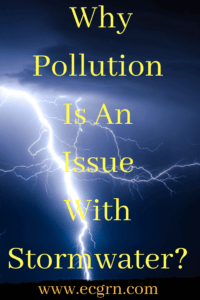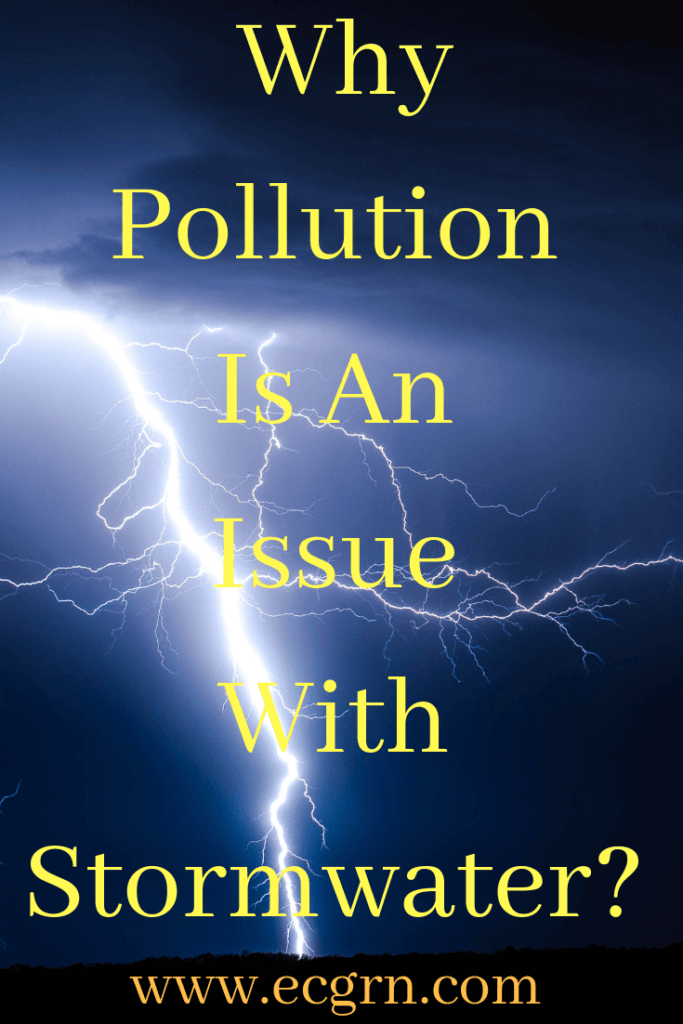Is there any correlation between a storm and pollution? Why pollution is one of the major issues during a storm? Why is stormwater runoff a problem, in spite of strict federal and state rules and regulations? How do the stormwater and pollution affect human beings and the environment? How does pollution get into stormwater? What we must know about the stormwater runoff? What are the pros and cons of the stormwater?
As we know that when a deadly storm strikes nothing can withstand the strong weather. Especially, any man-made structures and objects will be tossed by the violent weather in the fraction of seconds. During the worst weather conditions, naturally immediate human beings survival becomes the high priority. Due to the natural devastation, human basic needs become a scarcity. When faced with an unprecedented crisis, first saving and securing human lives will take over all other responsibilities for the local, state and federal authorities.
However, dealing with the stormwater and hazardous conditions becomes an added issue with any type of storm. A commoner, who live in a nice neighborhood without any previous environmental issues, may think that there is no way for any pollution to impact his or her property other than expecting the worst storm that can damage material things (e.g., personal property). He or she may also think that the local and state authorities have implemented strict environmental rules and regulations, which are more stringent than the federal government regulations.
True, in the United State of America (USA) we have stringent laws related to the environment. For example, the Clean Water Act (CWA) addresses any discharge of a pollutant into the waters of the United States (US). Under this law, discharge of any pollutant from a point source (i.e., a source of pollution that can be attributed to a specific physical location) into the US waters require the National Pollutant Discharge Elimination System (NPDES) permit from the US Environmental Protection Agency (EPA). Under the NPDES regulation, many industrial facilities require both a permit and Storm Water Pollutions Preventions Plan (SWPPP or SWP3), including the Municipal Separate Storm Sewer Systems (MS4s). In addition, there are other major stringent federal and state environmental laws and regulations that are being implemented and constantly monitored by the local, state and federal authorities.
Unfortunately, when a deadly storm lands on a particular area or region, no matter what best management practices (BMPs) or management plan we have in-place it becomes obsolete. For instance, hurricanes or cyclones, and snow storms initiate all kinds of deadly flooding. As a result, in nature, both surface and subsurface will be impacted due to initial heavy water flooding, and due to its force, the stormwater picks up all kinds of destroyed, including hazardous materials on its way till reaches to local streams, lakes, rivers, and coastal waters.
As we know that our forefathers even though they faced all kind storms in their lives, but pollution was not an issue. Nonetheless, since the industrial revelation, all kinds of pollution and its health-related issues led to the creation of the various federal legislations to manage the hazardous materials throughout the country.
For instance, in the1970’s the Love Canal Site in Niagara Falls, New York, incident reminds us to this day. As you may know that in 70’s this Site had major environmental issues. Groundwater at this Site was contaminated with numerous toxic chemicals and in due course, subsurface water contaminated the surface water also as a result of water level fluctuation and ultimately contaminated the nearby streams and other water bodies. This Site’s deadly incident led to the creation of federal legislation is known as the Comprehensive Environmental Response, Compensation and Liability Act (CERCLA), and also known as the “Superfund Law.”
Imagine, during heavy destructive flooding and stormwater runoff, a point source or permitted, controlled or managed pollution becomes the non-point source (i.e., pollution is caused by rainfall or snowmelt moving over and through the ground, it picks up and carries natural and human-made pollutants, depositing them into lakes, rivers, wetlands, coastal waters, and groundwater ) or uncontrolled one, impacting all over the places irrespective of local Block and Lot of the property, Municipality, or State boundaries, respectively.
Due to its violent nature, a devastating flood can disturb subsurface and surface exposing both open and buried hazardous materials and will carry out during water runoff cross-contaminating the non-hazardous and hazardous materials, and ultimately contaminating the adjacent streams, lakes, and wetlands killing aquatic life, including fish that we eat.
Think what can happen in this destructive process, for example, septic systems, domestic wells, trash, heating oil tanks, gasoline and diesel stations, chemical industrial sites, burial grounds, public water supply and sewer system, landfills, hazardous and construction sites, junkyards wastes, waste oil cans and spills and road salt, pipes leakage, and chemical fertilizers, pesticides, and bacteria, etc. Also mold inside the buildings becomes another major issue due to heavy moisture content. How can we live in these hazardous situations?
Urbanized areas are more prone to the pollution as a result of heavy flood during the deadly stormwater runoff because of impervious surfaces. Impervious surfaces include paved parking lots, streets, roads, and buildings, etc., runoff water picks up all kinds of material including pollutants through its course affecting local wider areas. This happens because of lack of natural conditions, such as grass, soil or vegetated areas, and creating less infiltration of water into the subsurface and facilitating it to move quickly from a high level on the paved and congested to low-level areas of the city and towns.
Heavy flooding can even also cause serious problems in pervious soil surfaces, where water can infiltrate into the ground slowly, such as farmlands, open spaces, residential and commercial landscape areas; however, due to storage and usage of various chemicals including fertilizers, pesticide and animal wastes. During heavy rainfall, stormwater runoff can easily pick up the wastes and chemicals and flow towards adjacent streams, lakes, and rivers polluting the entire water bodies making unsafe to use it for the domestic purposes.
As we can see a storm has its ripple-effect. No doubt this graphic detail can make one think seriously about the short and long-term consequences of a strong weather in our city or community. Moreover, personal damages caused due to a storm are mind-boggling to recover from it.
Of course, water is one of the human basic needs to survive, and in nature without proper and regular hydrologic cycle, we can’t survive. In fact, rainwater not only recharges the groundwater, but also supplies to other water bodies, such as streams, lakes or reservoirs, and rivers, etc., to fulfill human basic needs throughout the world.
However, in recent years unusual seasonal weather conditions have created extreme hardship for a human being to bear the sufferings. Within the USA, we have extreme weather pattern now, that is, drought situation in most parts of Western section affecting everyone including the business industry, and heavy flooding situations due to hurricanes in the Southeast and Northeast section of the country creating all kinds of hazardous conditions for us. Even people in other parts of the world are facing hardships, such as Germany with drought, and Typhoon Mangkhut in the western Pacific.
How to manage and survive in these extreme weather conditions? Solutions to these problems are not simple and easy to fix it. However, if everyone becomes a conscience and good stewards of our environment along with existing laws and regulations we can solve these problems. Finally, I think an environmental sustainability should be one of the priorities for all of us so that the present and future generations can live a healthy and peaceful life.
If you have any question or need additional information on this subject matter, please feel free to contact EcoGreen Solutions, LLC (EGS) at bmark@ecgrn.com. EGS is an environmental consulting firm, provides the expertise services in groundwater. Please visit the website at www.ecgrn.com for the detail of the services.
